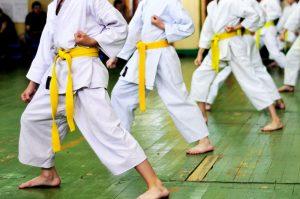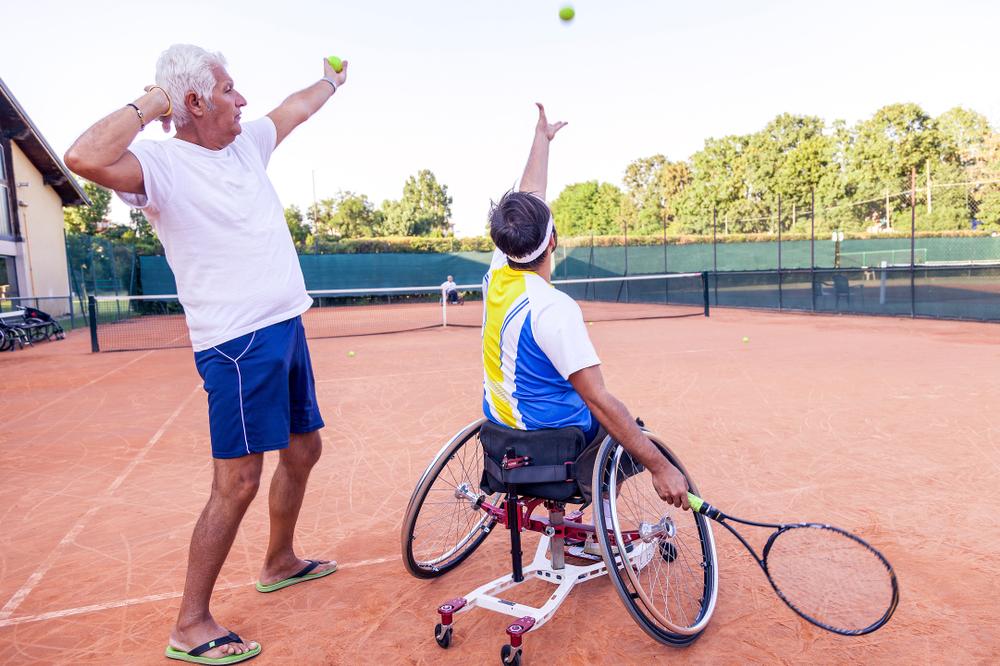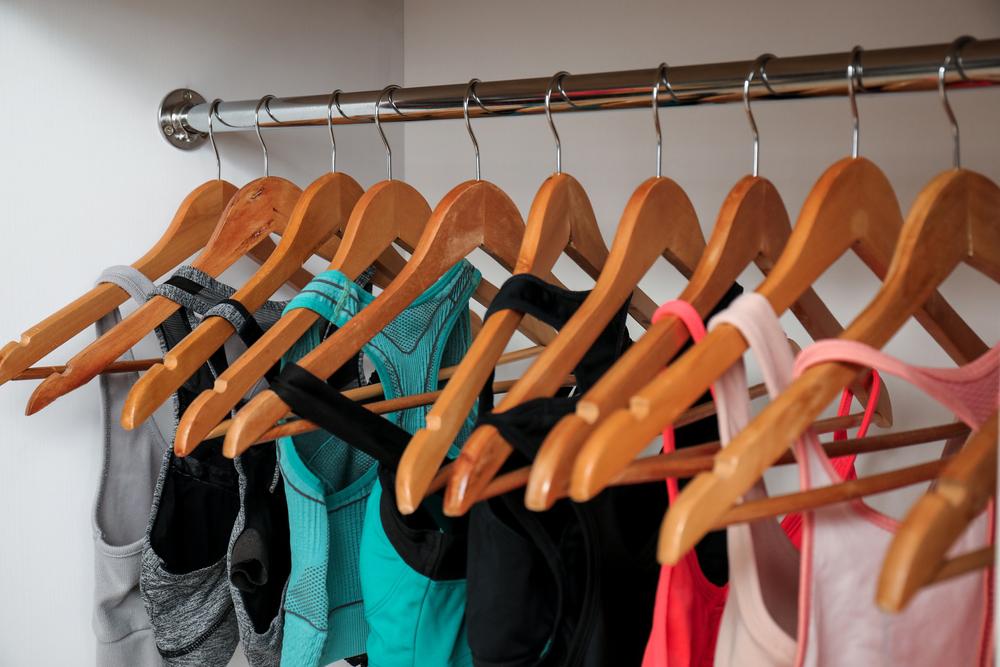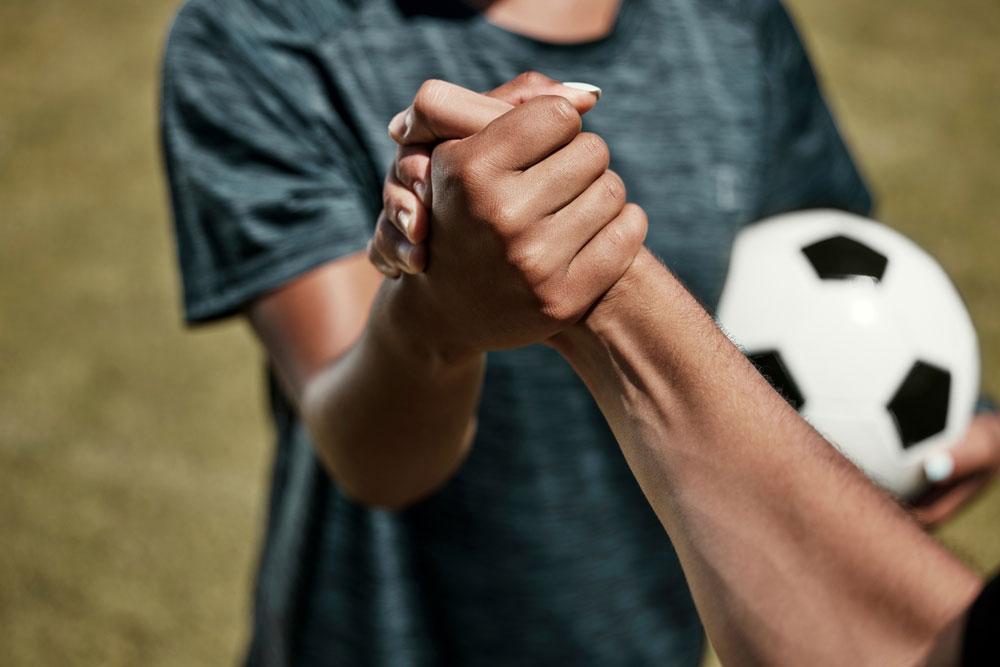Access to sport should be a universal right for kids, but unfortunately, even school sports have issues with access that are dependent on socioeconomic status. From away games and high gear costs to simple access to practice areas in urban environments, there are a lot of hidden ways that sport becomes inaccessible to many aspiring athletes. And unfortunately, all too often, this goes unnoticed by school athletic organizations, which are often struggling with budgeting issues of their own.
Here, Natalie Hummel, founder of Every Kid Sports, is helping explain the nuances of access to sport and sharing a few ways that families and coaches can be more aware and responsive.
The Situation
Understand the importance of sports
 We know that sport isn’t just about winning or bringing home a trophy at the end of the season: Sport can be a way for young athletes to make friends, grow leadership skills, and develop healthy habits that can last a lifetime. When you look at sport through this lens, it’s easy to understand just how important it is that every child has the opportunity to play—and how little it should cost them to do so. “Playing sports was the most important thing I did as a kid,” says Hummel. “It shaped who I am today, and when I learned that most kids weren’t playing sports simply because they couldn’t afford it, I knew that was something I needed to address.” That’s why she founded Every Kid Sports.
We know that sport isn’t just about winning or bringing home a trophy at the end of the season: Sport can be a way for young athletes to make friends, grow leadership skills, and develop healthy habits that can last a lifetime. When you look at sport through this lens, it’s easy to understand just how important it is that every child has the opportunity to play—and how little it should cost them to do so. “Playing sports was the most important thing I did as a kid,” says Hummel. “It shaped who I am today, and when I learned that most kids weren’t playing sports simply because they couldn’t afford it, I knew that was something I needed to address.” That’s why she founded Every Kid Sports.
Cost of sport is on the rise
“There is a broken narrative around sports that says to play, you need to pay,” explains Hummel. “When I was growing up, sports were prevalent everywhere and the access was incredible. You could play sports at school for free. Now, the majority of schools around the country are actually pay-to-play.” Only 22 percent of kids who come from income-restricted families are playing sports, and a large part of that is due to the associated costs. Hummel points out that the average cost for a recreational season in a sport is $138. “If you’re talking about a family that can hardly put food on the table, they’re not going to be able to spend that money to get their child playing,” she notes.
Access issues start young
 Even if a high school offers free access to sports, there are marginalized communities who will already be left behind, says Hummel. “If someone hasn’t played recreational sports growing up, they’re going to have a hard time making a high school team if the try-outs are against students who’ve been playing in recreational clubs from a young age,” she adds. “To play basketball or volleyball in high school, it’s expected that athletes already have the physical literacy and a basic competence. One of the things we’ve seen is the over-commercialization of youth sports, with the addition of these travel teams and elite teams from a young age. The people who have the money put their kids in those programs, and that just further erodes the youth sports marketplace.”
Even if a high school offers free access to sports, there are marginalized communities who will already be left behind, says Hummel. “If someone hasn’t played recreational sports growing up, they’re going to have a hard time making a high school team if the try-outs are against students who’ve been playing in recreational clubs from a young age,” she adds. “To play basketball or volleyball in high school, it’s expected that athletes already have the physical literacy and a basic competence. One of the things we’ve seen is the over-commercialization of youth sports, with the addition of these travel teams and elite teams from a young age. The people who have the money put their kids in those programs, and that just further erodes the youth sports marketplace.”
Understand the breadth of access issues
We tend to think of socioeconomic access to sport in very simple terms, often looking at gear as the starting point. But beyond the gear, there are many hidden costs that can cause a kid to lack access to sport. These costs can include:
- The need to work after school or on weekends to help with family expenses, thereby missing ‘mandatory practices’
- A parent who works long hours and can’t drive an athlete to the specific practice area on weekends or early in the morning
- Not being able to afford the ‘recommended’ extra coaching, physical therapy, personal trainer, gym membership, etc., that is suggested by a coach
- Lack of resources to get proper care for certain sport-specific injuries
- High costs for ‘away games’ and matches that involve overnight stays out of state
- Expensive mandatory gear and enrollment costs of being on a team
Access for whole communities
 There are also more widespread access issues that can cause a divide in athletes from a young age. Hummel cites a section of Detroit that she refers to as a ‘sport desert’ where there’s no programming available, and even access to parks and greenspace is limited thanks to the way the highways are gridded in certain areas. The rise of costly travel teams also then limits the less expensive options that used to be available, says Hummel. “All the people who can afford to put their kids in those programs move to those programs, and that means the recreational sports programs in the communities can’t sustain themselves because the only kids who are left to play in those programs are the kids who need scholarships. Those programs end up folding because they aren’t sustainable.” At Every Kid Sports, Hummel’s mission is to help those programs by funding scholarships for kids in need.
There are also more widespread access issues that can cause a divide in athletes from a young age. Hummel cites a section of Detroit that she refers to as a ‘sport desert’ where there’s no programming available, and even access to parks and greenspace is limited thanks to the way the highways are gridded in certain areas. The rise of costly travel teams also then limits the less expensive options that used to be available, says Hummel. “All the people who can afford to put their kids in those programs move to those programs, and that means the recreational sports programs in the communities can’t sustain themselves because the only kids who are left to play in those programs are the kids who need scholarships. Those programs end up folding because they aren’t sustainable.” At Every Kid Sports, Hummel’s mission is to help those programs by funding scholarships for kids in need.
How to Help
How a coach can help improve access
As a coach, you can help improve access by getting rid of your assumptions about athlete ability levels. “Especially in middle school sports, start by working on building those basic skills, and don’t assume that all of the kids on your team have had the same equal access to sports,” Hummel says. “There are a lot of fun ways that you can build the physical literacy that kids need, like doing fun drills to learn new skills. It’s also important to help kids realize that exercise and being part of a team feels good. And part of that means letting every kid play in games. We need to move away from the culture of winning to focusing on a culture of growth. And what I’ve seen is that the more a team focuses on inclusion and growth, the better they perform in the long run.”
How families can help improve access
 Good news: The right choice to improve access is also the best choice for your athlete! “Be aware of the choices that you’re making as a parent or caregiver about what programs your kids are joining,” says Hummel. She recommends avoiding ‘elite’ programs that are costly and promote sole focus on one sport in favor of recreational programs that allow athletes to pursue multiple sports. “What happens for a lot of kids who get into those elite programs is they end up burning out, they get injured, or they end up not being athletic as adults because they don’t have the best experience,” she says. “And if we have more families putting kids in recreational sports, it would fix a lot of these sports desert issues. That helps with access because if you’re paying a registration fee to a recreational program, you’re supporting that recreational program and making it possible for them to offer scholarships for the kids who can’t afford it.”
Good news: The right choice to improve access is also the best choice for your athlete! “Be aware of the choices that you’re making as a parent or caregiver about what programs your kids are joining,” says Hummel. She recommends avoiding ‘elite’ programs that are costly and promote sole focus on one sport in favor of recreational programs that allow athletes to pursue multiple sports. “What happens for a lot of kids who get into those elite programs is they end up burning out, they get injured, or they end up not being athletic as adults because they don’t have the best experience,” she says. “And if we have more families putting kids in recreational sports, it would fix a lot of these sports desert issues. That helps with access because if you’re paying a registration fee to a recreational program, you’re supporting that recreational program and making it possible for them to offer scholarships for the kids who can’t afford it.”
_________________
Takeaway
Access to sport isn’t simple and there are many obvious, as well as many hidden, barriers to entry for youth sport. As a caregiver or coach, you can help by offering options like easy-to-access scholarships or gear donations, and coaches can ensure that practice and competition schedules are flexible enough for young athletes who need to work as well as play. Coaches can also improve access simply by having an open-door policy, making it easy for athletes and parents to explain their individual needs.



